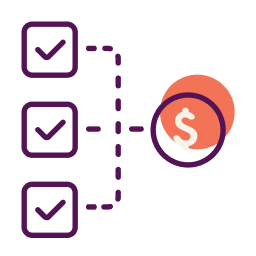In your small business you may use invoices and receipts, and both are key to making money in your business, But there are key differences between the two documents, and they have different purposes.
Invoices are documents you use to get paid while receipts are documents you issue when you have been paid.
In other words, a business will issue invoices before it gets paid, and receipts after it has been paid.
Receipts is a term that is sometimes used to describe the revenues of a business. And, of course, if you purchase items for your business you’ll need to keep copies for tax purposes.
Here’s why these terms are important, and how understanding and managing them can help your business get financing.
Invoice vs. Receipt Example
Here’s an example of invoices vs receipts. George owns a handyman business. He invoices a customer requesting payment. When the customer pays the invoice, he provides a receipt noting how much was paid.
The invoice describes for the customer the goods and services George’s business has provided, and the receipt confirms the goods or services the customer has paid for.
Can You Use Invoice and Receipt Interchangeably?
You shouldn’t use the terms invoice and receipt interchangeably even though under some circumstances they can prove similar points. An invoice provides details about services or goods provided with a request for payment, while a receipt provides proof of purchase for goods or services provided.
If there is a dispute about when an order was placed or what services were provided, an invoice or a receipt could be helpful in settling the dispute. In this case these documents may, to a degree, be used interchangeably. But if you have a dispute over whether payment was or wasn’t made, a receipt is the better document to have.
That said, some types of transactions are largely receipt based. For example, when you sell food to a customer in your restaurant you provide a sales slip or sales receipt (the check) that serves as the invoice. The customer then “approves” it by making a payment with cash, a credit card, or debit card. They get a receipt for that payment.
Why Potential Financing Makes Tracking Business Receipts And Invoices Important
Some types of small business loans and financing require revenues in order to qualify, and in some cases invoices or receipts can be helpful.
Invoice financing in particular is a type of financing where the business is advanced funds on outstanding invoices. It may also be described as “accounts receivable financing or A/R financing.” This short-term financing can provide working capital and improve cash flow for the business.
As mentioned earlier, receipts may be used as shorthand for the revenue a business has received. Some lenders and financing sources will extend financing based on business revenues. Business bank statements are often required to verify those revenues.
Both of these types of financing may be more flexible than traditional small business loans in terms of credit requirements (personal or business credit). When applying for invoice financing, in particular, the lender may be more interested in the creditworthiness of the client who owes the invoice, since they will be the ones to pay it.
Best Software Tools For Generating & Tracking Invoices And Receipts
While small business owners can manually create invoices either by paper or online using word processing tools like Word or Google Docs, those methods are the least efficient and most unreliable. (There are numerous free invoice templates available online.)
However, key information from those documents will still need to be entered into your accounting software for bookkeeping and tax purposes, so you may as well choose accounting software with invoicing built in.
Accounting Software for Invoicing & Receipts
Invoice generator tools integrated with your accounting software will allow you to create online invoices, track and receive payments and follow up on slow or unpaid invoices. You can also create sales receipts for customers or clients. (Note that if you make e-commerce or retail sales, you will likely need a merchant account with a point of sale system to generate customer receipts.)
Here are some of the best accounting software programs that include invoicing and allow you to create sales receipts:
Business Bank Accounts with Invoicing
Some business bank accounts also include invoicing features that allow you to invoice and receive payment to your business checking account. This can be another easy way to manage and track invoices and receipts, as well as to get paid.
Here are some of the best business checking accounts that offer invoicing:
Lilli
Popular with freelancers, contractors and small business owners, Lili offers invoicing software that lets you create, send, and organize invoices and accept all payment methods.



Have at it! We'd love to hear from you and encourage a lively discussion among our users. Please help us keep our site clean and protect yourself. Refrain from posting overtly promotional content, and avoid disclosing personal information such as bank account or phone numbers.
Reviews Disclosure: The responses below are not provided or commissioned by the credit card, financing and service companies that appear on this site. Responses have not been reviewed, approved or otherwise endorsed by the credit card, financing and service companies and it is not their responsibility to ensure all posts and/or questions are answered.